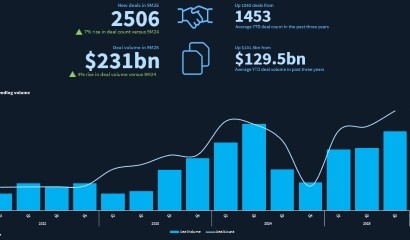Investors remain cautious as European CLO and ABS markets rebound after April’s tariff tantrum
Donald Trump’s ‘Liberation Day’ announcement on 2 April sent markets into freefall. Equity markets tumbled and treasury yields climbed. While partly insulated from the ructions in other markets, European ABS and CLO issuance stuttered and secondary spreads sagged.
Two months later, the world of European structured finance appears unperturbed. Although tariff uncertainty remains, spreads in both primary and secondary markets have all but retraced to the tights seen earlier this year.
But investors remain wary that Trump’s trade war – and further volatility – could restart at a moment’s notice.
“It’s unfortunately something that feels like a binary risk that’s hard to avoid,” said Rondeep Barua, CLO analyst at NinetyOne.
Strong fundamentals, an enduring technical in the form of dry powder, and a low correlation to other markets give investors reasons for cautious optimism, despite a choppy geopolitical backdrop.
“Given strong supply dynamics and the swift rebound following the tariff uncertainty, we anticipate any periods of spread widening to be relatively brief,” wrote Deutsche Bank analysts.
Blue skies?
Primary markets in both CLO and ABS markets have been working to clear a backlog of deals delayed in April.
A total of EUR 9.78bn CLOs and EUR 25bn of ABS, including retained tranches, were issued following Liberation Day through to the end of May, Debtwire and Creditflux data show.
New ABS issuance has so far been met with open arms. Deals are enjoying healthy bids, with mezzanine tranches often drawing more than 8x oversubscription during bookbuilding.
But since then, both markets have staged a strong recovery. “If you’d been away since the start of the year, you’d be looking at spreads and thinking not much has changed,” said Chris Whitcombe, head of European and US ABS at Challenger Investment Management.
That senior tranches of deals such as Banco Cetelem’s AutoNoria Spain 2025, which priced on Thursday (5 June), offer a pickup of around 10bps over Volkswagen Leasing’s VCL 45, suggests that investors maintain a healthy appetite for risk.
“It highlights a pervasive and strong bid for higher beta transactions, allowing for tight prints,” wrote Rabobank analysts.
Still, investors remain cautious.
CLO investors are becoming more selective. Managers with lower exposure to consumer discretionary spending are better placed to weather a gloomier macro picture, Lennox said.
Barua’s team are taking shelter further up the capital stack and choosing more conservative managers. “It doesn’t feel like the right time to be stretching on risk profile,” he said.
Trimmed-down triple-C buckets in many European CLOs are cause for optimism. Many managers took advantage of higher loan prices earlier this year to rotate out of the weakest credits, Lennox says. Less than 10% of the European CLO universe has at least one triple-C metric above 7.5%, according to Morgan Stanley data.
Many CLO managers have room to trade out problematic names, too. Less than a quarter of deals are currently outside of their reinvestment period due to a booming reset and new issue market over the past few years, Morgan Stanley data shows.
Still, many CLO managers are struggling to build par.
Some 86% of deals inside their reinvestment period have posted negative adjusted par build year to date, Bank of America data shows. A lack of loans issued at a discount, the downgrade of Colisee and Emeria, and Altice France’s reclassification as a defaulted obligation have all hindered managers.
Lennox expects to see the strong CLO primary market volumes that characterised the start of the year to continue: “There’s a very, very high number of warehouses out there, and they’re still being opened,” he said, “We know there’s more supply to come.”
Secondary spreads have retraced, too. Some corners of the ABS universe now trade tighter than before the tariff announcements.
UK prime RMBS and buy-to-let RMBS have tightened to around 48bps and 74bps, respectively – tighter than levels seen in late March and well below the 58bps and 90bps seen in mid-April, Bank of America data shows. European two-year auto ABS are trading at around 50bps, outside the 44bps seen in late March but below the 55bps seen in mid-April.
“We’ve almost done a round trip,” said Lennox.
Stormclouds
Exactly how far tariffs could feed through to the macroeconomic environment is still being debated, though it is widely expected to crimp growth.
Morgan Stanley economists see European growth risks as skewed to the downside, with the positive impact of some European countries’ fiscal policy likely to be offset by US tariffs. The bank expects Europe and the UK to print anaemic growth rates this year of 1% and 0.8%, respectively.
In Europe, Whitcombe expects that tariffs could be deflationary by creating an excess supply of goods, though this may be partially offset by higher fiscal spending from some European governments.
Still, as the market prepares to head to Global ABS 2025 in Barcelona next week, the three investors Debtwire spoke to for this article remained cautiously optimistic.
“Barcelona is going to be a pretty constructive tone,” Lennox said.










